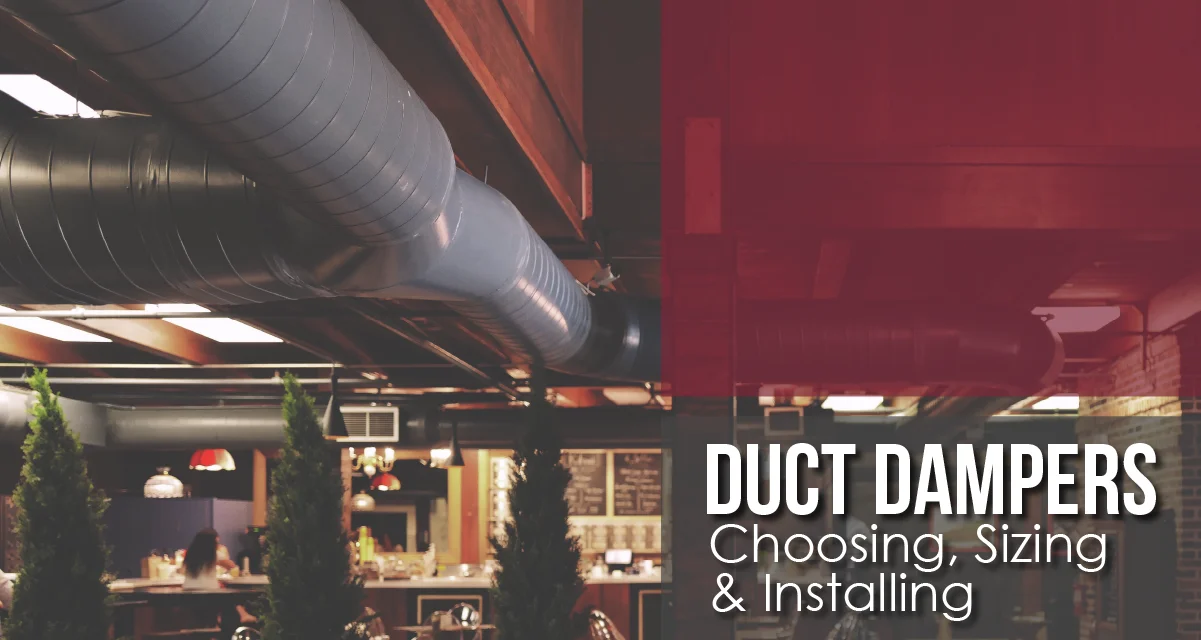Duct dampers keep air moving through your HVAC system. Learn how to choose, size, and install them in your ductwork on the MCDLG Newsstand.
Designing For Ductwork
HVAC design requires understanding the tools of the trade. Dampers serve many different purposes in your HVAC system. They can be designed to direct airflow through your system, or balance pressure across a section of duct.
They can be built to direct airflow without an actuator, or for major industrial applications. When thoroughly tested and certified, dampers can be designed to close during an emergency, to prevent the spread of smoke and fire through rated wall assemblies.
.jpg?width=600&height=319&name=Spiral%20ducts%20in%20a%20factory%20(Resize).jpg)
Ducts will come in various shapes and sizes. You will need to make sure your dampers fit.
HVAC dampers can do a lot for your system. When choosing dampers for your project, you will need to understand a few things about your ductwork. Starting a project and need dampers? Contact Arrow United today about our 517-518 series control dampers.
The 517-518 dampers offer excellent airflow thanks to their airfoil blades. These dampers also offer tight closure, for minimizing air leakage. Contact Arrow United
Application
The needs of the application will always come first. What do you need the damper to do? How fast will air move through the duct? How much air pressure is expected in this duct section? To answer these questions, you will need to know about the area receiving the dampers.
You will be installing dampers throughout your system and each damper will perform in a different environment. Air velocity and air pressure will vary during standard operation, though there will typically be an upper limit for each.
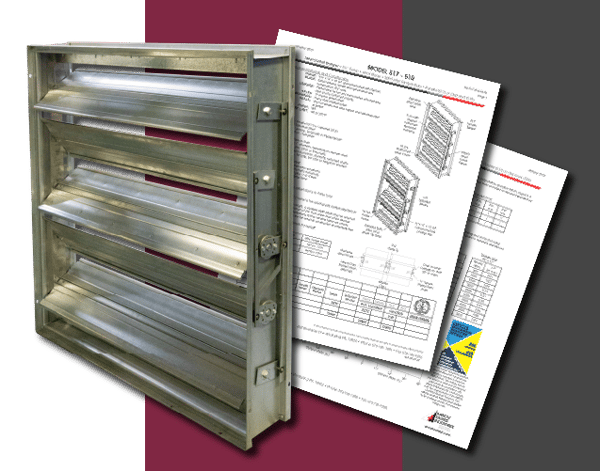
Engineers can help determine the maximum air velocity expected in the duct at various points in your HVAC system, as well as the expected air pressure. You will need this information for the duct receiving the damper. In the US, we typically measure air velocity in feet per minute and air pressure in inches of water gauge.
Every damper, regardless of type, will have a maximum allowable air velocity and maximum static pressure. These values should come close to the values calculated by the engineers.
Dampers are not guaranteed to operate in airflow conditions that exceed these maximums. Even if they do operate, you risk damaging the unit every time it opens or closes. Check the submittal for details about the damper’s performance capabilities. Make sure your dampers can operate within the maximum air velocity and maximum static pressure of the application.
Duct Size and Shape
Once the performance requirements are met, the next step will be determining the damper’s size. You will need to know the size and shape of the duct receiving the damper. Shape will be easy. Ducts will typically be square, rectangular, or round. Round ducts are commonly called spiral ducts, because of the way the duct is manufactured.
HVAC projects will often use both types of ducts to pass air throughout the building. Start by determining the shape of the duct receiving the damper, then check for dampers that match that shape.
Round control dampers are designed for spiral ducts. They typically have a single blade at the center of the damper, which fits the full inner diameter of the damper when closed. They can be designed to perform the same tasks as square and rectangular dampers: standard air control, air pressure balancing, one-way backdraft flow, and even meeting life safety requirements.
Even with this versatility, you may find a square damper that works best for your application.
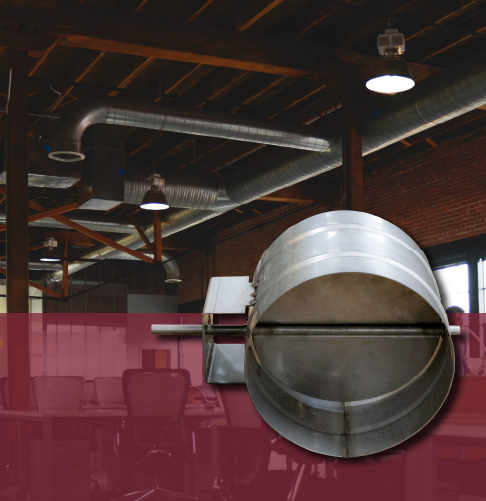
The shape of the damper should match the shape of the duct. If it doesn't match, consider adding transition collars.
The damper’s shape should match the shape of the duct receiving it, but square and rectangular dampers can be installed in round ducts with transition collars.
Transition collars fit over the faces of the damper and allow it to connect to ducts of different shapes. The most common transition collar is a round transition for a square damper. This transition would allow a square damper to be installed in spiral ducts.
The next consideration will be the size of the damper. The damper should closely match the size of the duct, but how you measure the damper's size will depend on how it is installed. Will the damper be mounted inside of the duct, so that its frame is inside the ductwork? Will the damper be mounted so that it sits between duct sections?
These two mounting types are known as “in duct” and “on face”. "On-face" means the damper is installed onto the opening, so that only the face of the damper is in the airstream. Each mounting method requires a different sizing method:
- For in duct mounting, size the damper along its outer dimensions (O.D.) or the outer perimeter of the damper’s frame
- For on face mounting, use the inner dimensions (I.D.) or the perimeter along inside of the damper frame
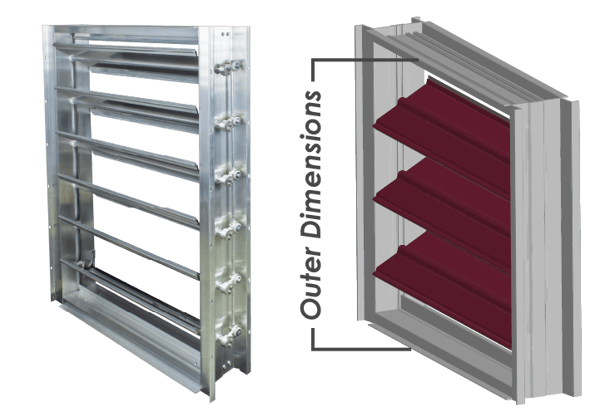
For in-duct mounting, measure the damper along the outer dimensions. Note that deductions will be made to these dimensions.
The difference between these two sizing methods will be minor, but getting it wrong means the damper won’t fit the duct. Using the wrong dimensions can make a damper that is too large for the duct or too small for the opening.
Transition collars are typically measured along the outer dimensions on the damper side, so that the collar fits along the frame of the damper. The duct side of the collar can be measured along inner or outer dimensions, depending on whether the transition should fit inside the duct or meet with it.
Size your dampers according to how they will be installed and make sure each damper will fit the receiving duct.
Installation
Once sized and built, the last step is to prepare the dampers for installation. Damper installation requires preparation. Installers will first need to know how the damper is mounted and what accessories must be attached to the damper.
Transition collars and actuators are typically installed in the field. The damper side of the collar is affixed to the frame of the damper and secured with caulk. This ensures the collar stays on the damper and prevents air leakage through the seam.
The damper’s actuator may need to be mounted to the damper before going in the duct. This depends on how the damper is installed, on the duct face or in the duct, and whether the actuator should be mounted internally (inside the duct) or externally (on the outside of the duct).
The actuator can be installed on the damper's jamb or on the damper's face, using a actuator mounting assembly. If the actuator comes with an actuator mounting assembly, be sure the assembly is installed before mounting the damper into the duct.
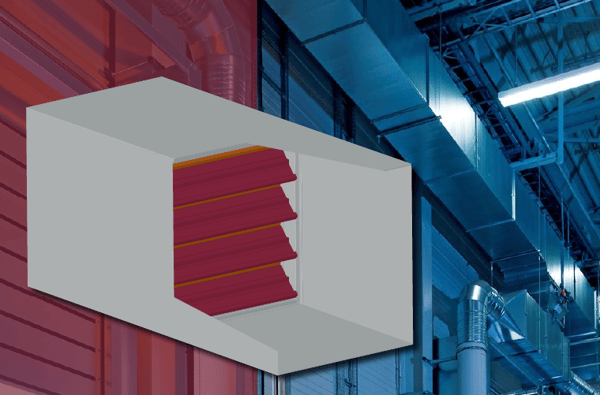
Once ready, installers should review and gather any required tools for mounting the damper. Installation may also require hardware that isn’t included with the damper. Make sure you have everything you need before installing the damper. The last step is to install the damper.
Test the damper after mounting it. Open and close the damper using the actuator. The damper’s blade should rotate freely, and the unit should be able to fully open and fully close without issue. Once the test is complete, installers will caulk the perimeter to seal it in place.
A damper should meet the requirements of its application. Understand the operating environment surrounding the damper and ensure that the dampers will fit at the installation location. Install the damper according to the manufacturer's instructions. Keep your HVAC system running at peak performance with the right dampers.

Need a damper that meets requirements? The 517-518 is an efficient airflow control damper from Arrow United. We build our dampers from the ground up, to meet your project's needs.
For more on dampers, check out these Newsstand articles:
Do you have a question on something we haven't covered here? Or maybe you need help from industry experts? MCDLG can help. Contact us by clicking on the button below.
.webp?width=91&height=70&name=MCDLG%20Logo%20(Resize).webp)
